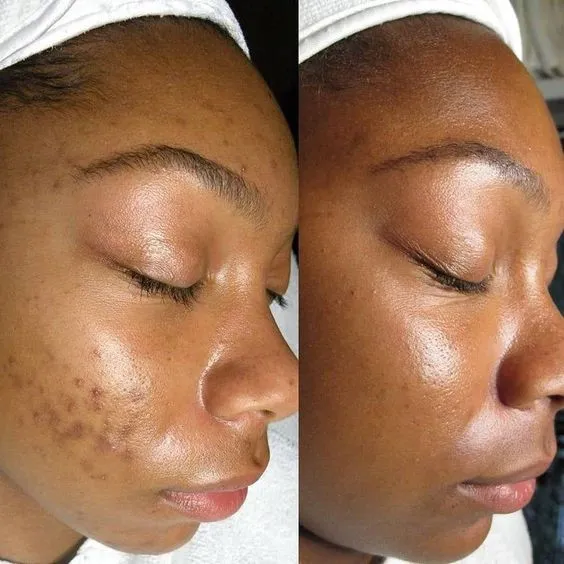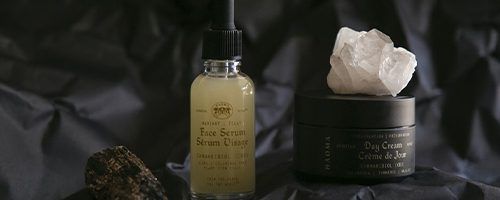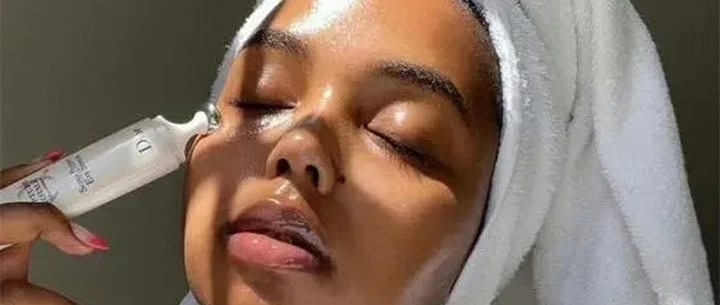LOL, real story, I did like 5 chemical peels last year and I am still not a Gloria ohhhh 😪. (Well, I lowkey am almost there sha 🌚) Buttttttttt I CAN’T DENY HOW MUCH THEY HAVE TRANSFORMED MY SKIN.
Let me start about how my skin texture has become dramatically better, my pores are much much smaller, my skin is brighter, my acne has its days (they don’t come like before again, phew), and truthfully, my skin gives on most days !
Chemical peels are a popular cosmetic procedure that involves the application of a chemical solution to the skin. The solution is designed to exfoliate and remove the outer layer of dead skin cells, revealing smoother, more youthful-looking skin underneath.
For my girls who think it's a waste of time and money, hang in there, there’s always light at the end of the tunnel. I saw the light, so shall you ! (we are here to put you on 🤫)
Types of chemical peels
So, Chemical peels can be used to treat a variety of skin concerns, including acne, fine lines and wrinkles, hyperpigmentation, and uneven skin texture.
There are several different types of chemical peels available, each with varying degrees of intensity and targeted skin concerns. These include:
Superficial peels: These are the mildest form of chemical peels and are designed to treat minor skin imperfections. They typically use alpha-hydroxy acids (AHAs) such as glycolic acid or lactic acid to exfoliate the skin.
Medium peels: These are more intensive than superficial peels and can treat deeper skin imperfections such as fine lines and wrinkles, acne scars, and hyperpigmentation. They typically use trichloroacetic acid (TCA) to exfoliate the skin.
Deep peels: These are the most intensive type of chemical peel and are designed to treat severe skin imperfections such as deep wrinkles and scars. They typically use phenol to exfoliate the skin.
I have done number 1 & 2, and yup, highly recommend it !!!

Before undergoing a chemical peel, it is VERY IMPORTANT to consult with a dermatologist or aesthetician to determine which type of peel is best for your skin concerns and skin type. They will also be able to advise you on how to prepare your skin for the procedure and how to care for your skin post-treatment.
This particular point up here 👆is the answer to this: ‘’I did the whole chemical peel shabang and my skin is still not giving’’
During a chemical peel, the skin is thoroughly cleansed and the chemical solution is applied to the skin. You may experience a slight burning or tingling sensation as the solution penetrates the skin. After the solution is applied, it is neutralized with a special solution to stop the exfoliating process.
Following a chemical peel, the skin may be red and sensitive for several days. It is important to avoid exposure to sunlight and to use a gentle, fragrance-free moisturizer to help soothe the skin. You may also be advised to avoid certain skincare products or treatments, such as exfoliating scrubs or facial waxing, for a period of time after the peel.
Chemical peels can be an effective way to improve the overall appearance and texture of your skin. However, they are not suitable for everyone and may not be recommended for individuals with certain skin conditions or medical histories. If you are considering a chemical peel, it is important to do your research and consult with a qualified professional to determine if it is right for you.
For my girls who think it’s a waste of time and money, hang in there, there’s always light at the end of the tunnel. I saw the light, so shall you ! (we are here to put you on 🤫)
Until next time,
MY Lab Africa
💋
The information contained in this article is for informational purposes only and does not constitute medical advice, nor is it a substitute for professional medical advice, diagnosis or treatment. Please seek the advice of your physician with any questions you may have about the information contained herein, as well as the risks or benefits of any treatment.


